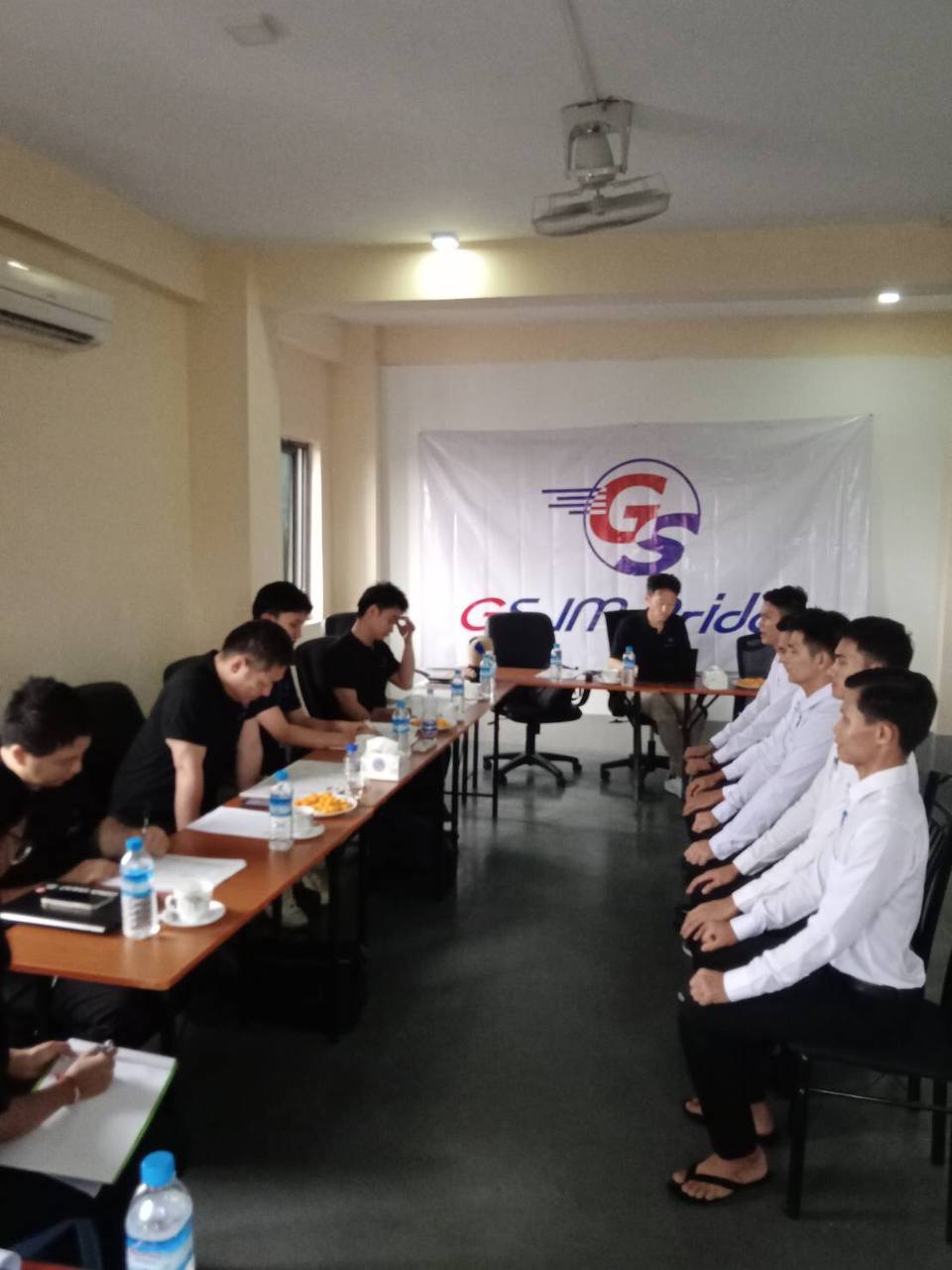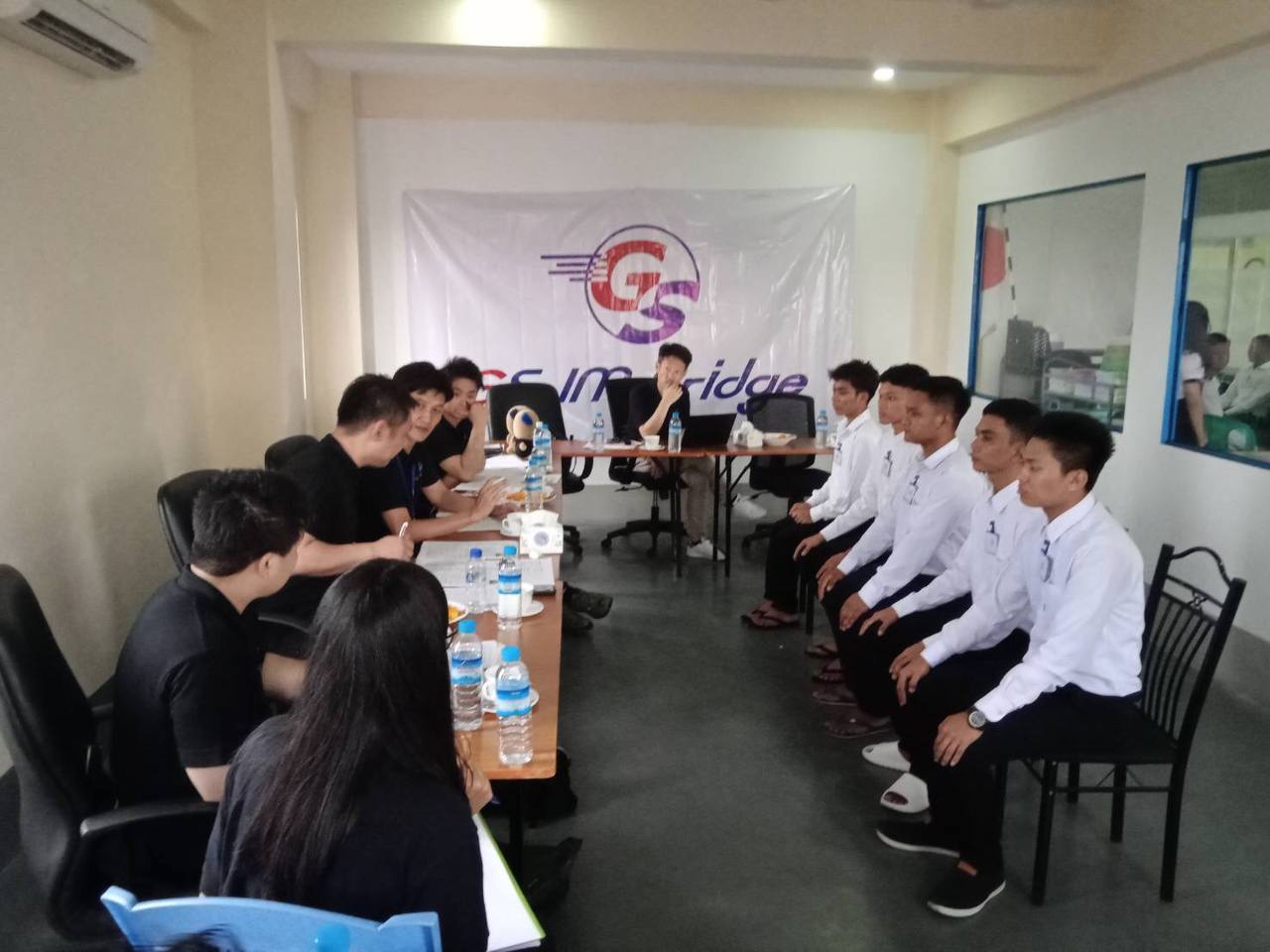Around the summer of 2022, members from different companies and countries met and discussed many things. There is a shortage of mechanics and sheet metal repair technicians in the automobile industry, and there will be an even greater shortage in the future, making it impossible to maintain many of the cars on the road in Japan. It's good that Myanmar people are serious, but the opportunities for education and work opportunities are decreasing rapidly... Japan has a labor shortage and many companies are recruiting foreigners, and there are many foreigners working there, but they don't know each other very well and communication errors occur. As we talked about this, we learned that there are many Japanese cars driving in Myanmar, that the grammar of Burmese and Japanese is similar, and that many Myanmar people want to go to Japan if they want to work in Japan. There are many positive opinions such as , etc. Let's connect a major Japanese used car sales company and a Japanese language school manager who is a Myanmar national who worked in Japan! With this in mind, we established GSJMbridge. This bridge connects Myanmar and Japan.It is a bridge that not only connects Myanmar but also allows people to go back and forth in 2 ways. To cross this bridge, you need to receive education and reach a certain level, but if you first understand this idea and make the effort to cross this bridge, I think you will be able to develop wonderful human resources. This is what we have in mind.
GSJM has partnered with GAS (register number 200/2023) and LUCKY SHWE ZEE KWAT (register number 228/2023) to ensure stable shipments to Japan. In addition, we have partnered with multiple unions to provide peace of mind regarding our services in Japan. I want you to feel safe training at GSJM.
.jpeg)
Japan offers top-tier training for car repair technicians, ensuring you gain valuable skills.
Japan's robust automotive industry provides numerous career opportunities.
Skills learned in Japan can open doors to international career options.
Car repair technicians in Japan enjoy competitive salaries and potential for bonuses.

The Shwedagon Pagoda and also known as the Great Dagon Pagoda and the Golden Pagoda
is a
gilded stupa located in Yangon, Myanmar.
The Shwedagon is the most sacred Buddhist pagoda in Myanmar, as it is believed to
contain relics of the four previous Buddhas of the present kalpa. These relics
include
the staff of Kakusandha, the water filter of Koṇāgamana, a piece of the robe of
Kassapa,
and eight strands of hair from the head of Gautama.
Built on the 51-metre (167 ft) high Singuttara Hill, the 112 m (367 ft) tall pagoda
stands 170 m (560 ft) above sea level,[note 1] and dominates the Yangon skyline.
Yangon's zoning regulations, which cap the maximum height of buildings to 127 metres
(417 feet) above sea level (75% of the pagoda's sea level height), ensure the
Shwedagon's prominence in the city's skyline.



Myanmar not only offers natural resources and arable land in abundance – importantly, the
country also possesses a skilled, motivated and young population. In the previous years of
political and economic reform, Myanmar society has shown to be capable of driving change.
Myanmar’s citizens have demonstrated flexibility in adapting to the availability of new
opportunities and in dealing with new technology (the ‘digital leapfrogging of Myanmar’),
while acquiring new skills and competencies in a learning society – as employees and
entrepreneurs. Particularly in Yangon, and increasingly in urban centres in all of Myanmar,
traditional life and modernity mix harmoniously – society is open, warm and welcoming to
foreign cultures and influence.
Myanmar is the largest country in mainland Southeast Asia and has – beyond its domestic
market of more than 50 million citizens – direct access to China, India, ASEAN and other
international markets through ports along the Bay of Bengal and Andaman Sea.
After decades of international isolation prevented the modernisation and expansion of
infrastructural networks, the Myanmar government is prioritising the establishment of
efficient national and international supply chains for future economic growth – particularly
in terms of power infrastructure, road, rail, air and ports.



















